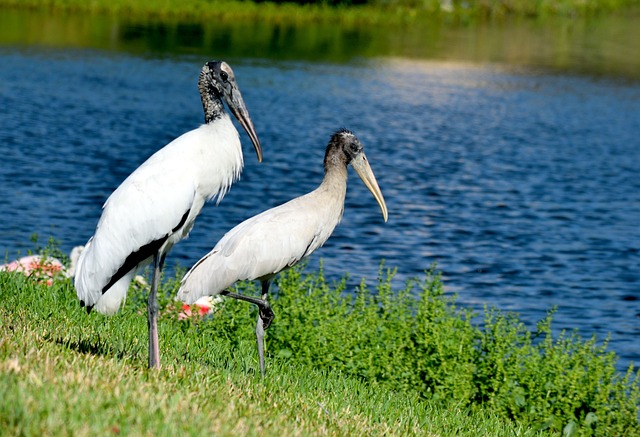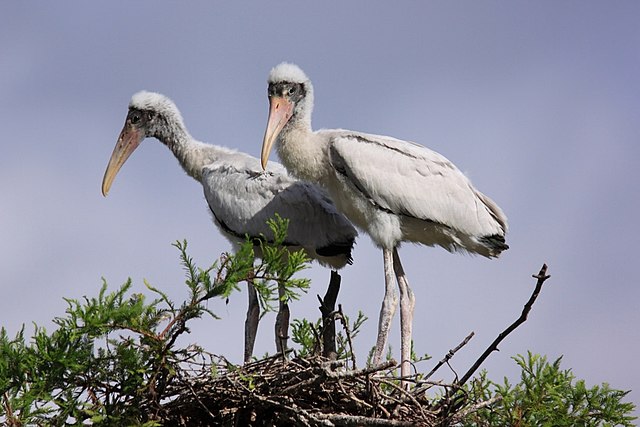 Did you know that swamps aren’t only home to scary alligators and crocodiles? Wood storks and other birds, like the egret and heron also share the wetland habitat.
Did you know that swamps aren’t only home to scary alligators and crocodiles? Wood storks and other birds, like the egret and heron also share the wetland habitat.
But have you ever heard of a wood stork? Why are people talking about them?
What are wood storks?
Affectionately called stonehead, wood storks (Mycteria americana) have no feathers on the top of their heads. They make their nests in tall Cypress trees, away from their predators.
Standing over three feet tall, and with a wingspan of roughly five feet, these birds are big. However, they are unique in more ways than their looks - they are North America’s only native stork! Though the Florida Everglades are their original stomping grounds, they have spread out to Mississippi, Alabama, Georgia, and the Carolinas due to habitat destruction from improper drainage, chemical runoff, and the overgrowth of foreign plant life.
The ESA and Conservation Efforts
The Endangered Species Act (ESA) was first introduced in 1973 under former president Richard Nixon to combat the extinction of wildlife.
The Migratory Bird Treaty Act (MBTA) and the Clean Water Act (CWA) also made major contributions to the wood stork’s recovery. Efforts included protecting existing wetlands and restoring damaged areas, repurposing old rice fields, and establishing wetland parks to give the wood storks a wider range of territory.
In addition to the government acts that have been passed, some residents of the Southeast have taken matters into their own hands. One farmer in Georgia collaborated with the USDA’s Natural Resources Conservation Service (NRCS) to restore a cypress tree wetland located on his property. Within a short time, he had wood storks for neighbors!
Promising Results
 All of these undertakings have produced great results. Former colonies are actively being rehabilitated for the storks to use, which has led to a population boom. Proof of their success has been a jump from 5,000 breeding pairs in 1984, to the present community of 10,000.
All of these undertakings have produced great results. Former colonies are actively being rehabilitated for the storks to use, which has led to a population boom. Proof of their success has been a jump from 5,000 breeding pairs in 1984, to the present community of 10,000.
On top of the population boom, the number of breeding grounds has grown from 29 to 99, more than three times the original number! Wood storks have also met the recovery goal of having at least 1.5 chicks per nest annually over the past five years in their breeding regions. After delisting, the storks will continue to be monitored by the US Fish and Wildlife Service (FWS) for at least five years to ensure population stability.
A Brighter Future
Adding to all the wonderful advancements we’ve seen with the wood storks, President Biden has introduced the Bipartisan Infrastructure Law (BIL) and the Inflation Reduction Act (IRA), which have earmarked more than $2 billion to help fund actions of protecting and restoring wildlife and habitats across the country.
The ESA has made a comeback from near extinction possible for more than 99% of listed species in the 50 years since it was passed. Coupled with help from concerned people, these birds have proven they have the will to survive. At this rate of growth, we should expect to see these birds for a long time to come!
Sources: FWS.gov, NPR, USA Today







